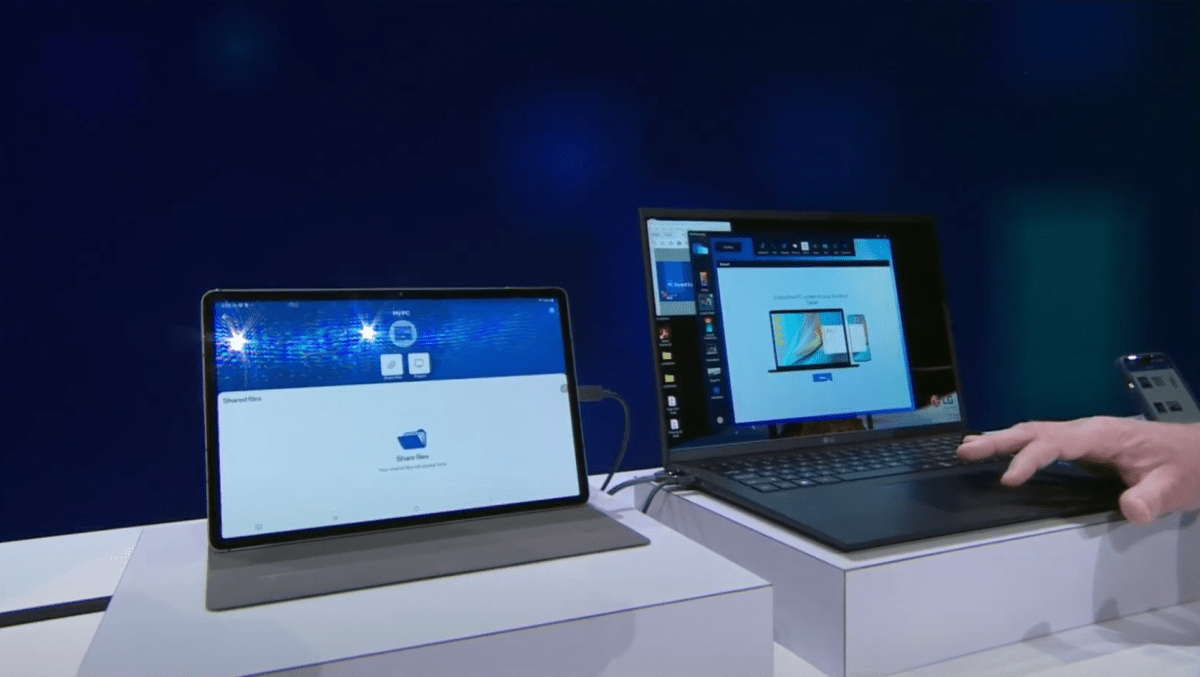 Image: Intel
Image: Intel
Intel showed off what you can expect from its purchase of Screenovate last December: cross-platform communication from your PC to Android tablets, smartwatches, iPhones, and more—all reserved for specific Evo PCs.
On December 6, Intel bought Israeli developer Screenovate, reportedly for $100 million. The company is now part of Intel’s Client Computing Group. At CES 2022, where Intel announced new 12th-gen Alder Lake CPUs for laptops, plus an expansion of its Alder Lake processors for desktop PCs, executives explained what that acquisition will mean for PC users.
According to a study cited by Intel executive vice president Greg Bryant, 70 percent of users access the internet across a variety of devices, and 90 percent of users use multiple screens to accomplish a single task. “At Intel, we want to unify that experience and make it easier,” Bryant said.
In a demonstration, Intel executives showed the Screenovate technology connecting to an iPhone, and allowing iMessages and its SMS messages to be shown and interacted with from a PC. The demonstration then showed the same laptop interacting with a smartwatch and displaying the heartrate, oxygen levels, and a recent EKG/ECG capture. (The demonstration didn’t identify the smartwatch model.) The same laptop then connected to an Android display and extended the screen onto it. Finally, the demonstrator then snapped a photo on a smartphone and shared it to a smart TV. The point? All of these devices seamlessly connected to the Evo platform.

Intel
Intel
Intel
“This is really going to be a game-changing experience, and I love to see that the PC remains at the center of it all, enabling all of those devices to work seamlessly together,” Bryant said. That experience will be available in an “exclusive number” of Evo devices in time for holiday 2022, Bryant added.
Intel has established its Evo brand as indicative of the extra effort Intel engineers and PC makers put in to making the laptop a premium device, similar to AMD’s own AMD Advantage program. At CES, Intel announced a significant expansion of Evo into peripherals and even desktop and commercial PCs.
Sharing content between a PC and a phone can be accomplished via Windows’ Your Phone feature, though the interaction with iPhones is very limited. Likewise, apps supplied by companies like Samsung can allow phones to share photos and other content with smart PCs. (Windows doesn’t do a great job here, with Microsoft rather limply pushing a wireless dongle to extend the PC’s display onto smart TVs.) What’s interesting, though, is that Intel is trying to step in to apparently do two things: first, establish the PC as a central hub for content; and second, add value to its Evo brand via exclusive experiences. Intel’s content-sharing efforts may need a little polish, but its ambitions bear watching.
Author: Mark Hachman, Senior Editor

As PCWorld’s senior editor, Mark focuses on Microsoft news and chip technology, among other beats. He has formerly written for PCMag, BYTE, Slashdot, eWEEK, and ReadWrite.
Recent stories by Mark Hachman:
Apple claims its M4 chip’s AI will obliterate PCs. Nah, not reallyWindows’ AI-powered future could feature ‘Qualcomm Inside’Google’s best AI editing tools are coming to Chromebooks, not PCs




